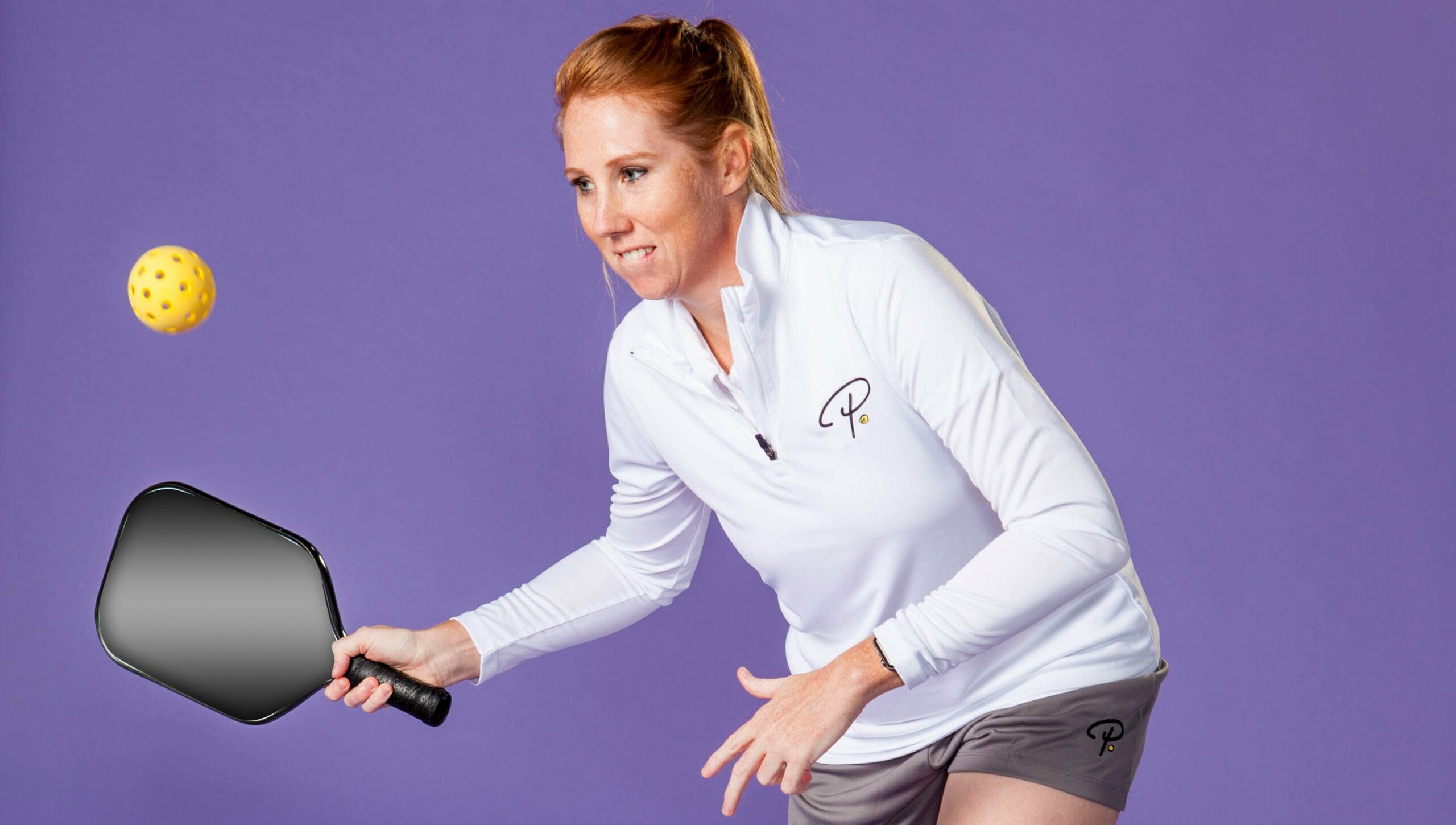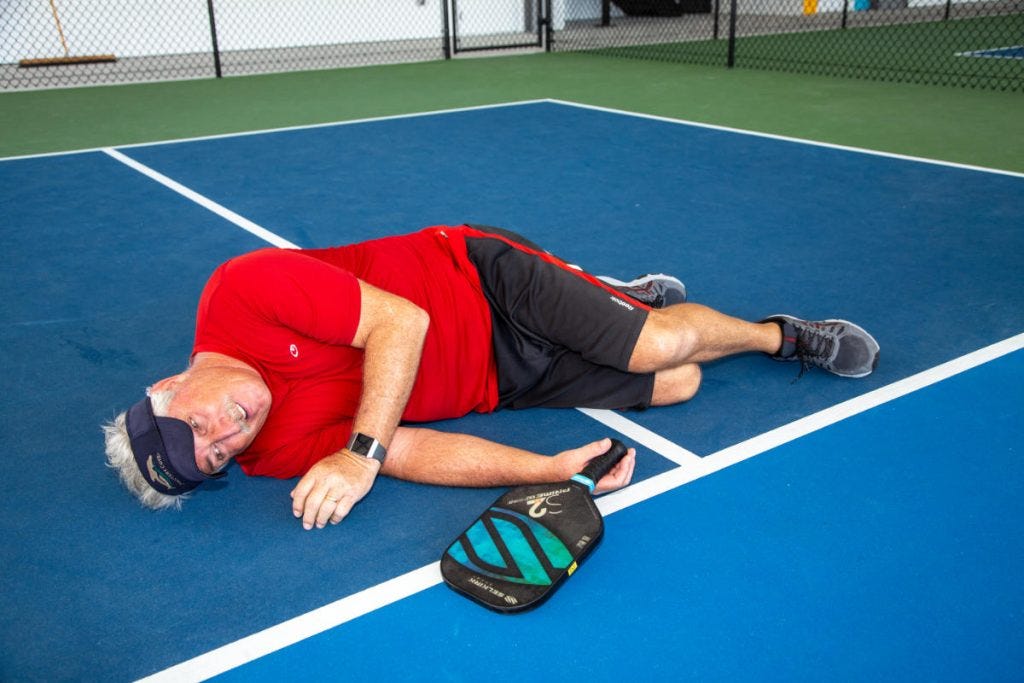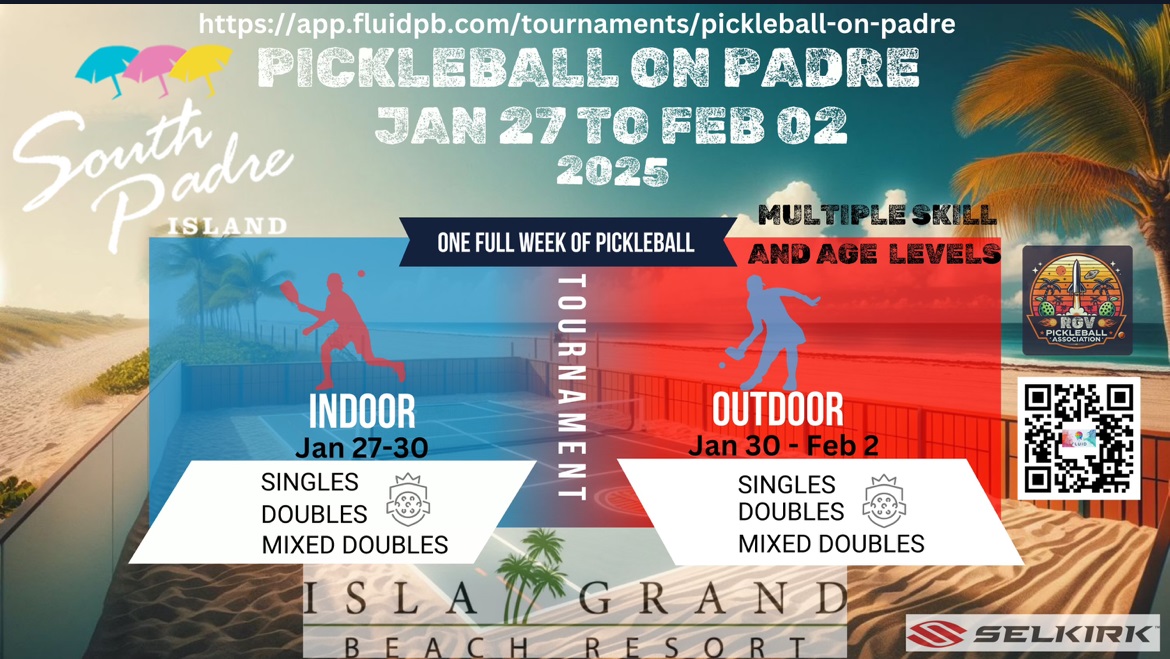
It’s no secret — pickleball is POPULAR. And for good reason! The fast-paced paddle sport is a great workout for people of all ages and it’s easy to see why. Pickleball is easy to learn, the rules are simple, and it can be played at any pace — from leisurely to competitive. Not to mention, you get the added health benefits that come with socializing.
So, if you’re seeking a fun, engaging way to boost your physical and mental wellness, look no further. Pickleball health benefits include:
It’s a great cardio workout
It helps you stay sharp
It can improve joint health
It’s good for your heart
It can help relieve stress
It’s a social sport
Here are six reasons in detail for loving pickleball.
1. Playing pickleball is a great cardio workout
It’s estimated that a game of pickleball can burn up to 600 calories per hour, making it an excellent way to move your body and help keep your heart and lungs healthy. Pickleball is an aerobic exercise, which means it helps improve lung function, control blood sugar levels, regulate blood pressure and improve cardiovascular conditioning
2. It helps you stay sharp
Pickleball is a fast-paced game that requires split-second decisions. Research has shown that playing pickleball can help improve your cognitive function and memory recall. This quick-thinking sport will also help you improve your hand-eye coordination over time.
3. It’s easier on the joints
Compared with sports like tennis or running, pickleball puts a lot less stress on your joints and muscles. Thanks to the smaller court size, pickleball players don’t have to travel as far to keep the ball in play, reducing the strain on their knees, hips, and ankles. The underhand serve also minimizes muscle and joint stress, making pickleball an ideal sport for all ages.
4. Pickleball is good for your heart
Because pickleball is such an intense cardio workout, it’s great for your heart health. In fact, one study showed that playing pickleball may lower your risk of heart disease by positively modifying risk factors like cholesterol levels and blood pressure.
When diving into pickleball health benefits for a 2022 study, researchers compared those who walked at a self-selected pace for half an hour versus people who played doubles pickleball for 30 minutes. Although walking required 54% more steps, those who played doubles pickleball had 14% higher heart rates, burned 36% more calories and experienced higher enjoyment levels by 150%
5. Playing pickleball can relieve stress
Not only is pickleball good exercise for your body, but there are some big mental health benefits of pickleball as well. Like other physical activities, pickleball can give you a positive outlet when dealing with stresses that may be weighing on you. Taking a break for movement and socialization will likely leave you feeling refreshed and more able to manage those stressors. Plus, aerobic activities like pickleball cause your body to release endorphins, feel-good neurotransmitters that help relieve stress and anxiety.
6. It’s a social sport
Because it requires at least two players, another health benefit of pickleball is that it’s a social sport. It’s a great way to meet people and make new friends, especially if you join a club or league. Not only will you get to socialize, but you’ll also get some exercise in the process. That’s what we call a win-win.
What’s more, social sports like pickleball can help ward off feelings of loneliness and depression, and increased socialization may even help you live longer.

Getting Ready to Play:
- Be sure to have the proper shoes, ones that support your feet and are designed for court sports.
- Give any existing injury plenty of time and rest to heal before you resume play.
- Know how to get help quickly if you or a co-player are hurt or develop a medical problem. Is there a telephone, a first-aid kit and an automatic external defibrillator (AED) nearby? Do you have the phone number available of someone to call in case of emergency?
- Be aware of any obstacles in the area that you might run into or trip over, such as benches or gym equipment.
- Never play on a wet court; they are extremely dangerous. One way to check a damp court surface is to press your toe down firmly and make a twisting motion. If you leave an obvious “wet” spot it’s too wet to play.
- Check with your doctor regarding exercise and any physical conditions that exist or may have previously existed.
BEFORE PLAY
Warm-up:
- The main purpose of a warmup period is to raise the general body temperature prior to playing. When the body temperature is raised it will increase your ability to perform the stretching exercises. The warmup period should be approximately 5 minutes. Try a fast walk to the pickleball courts, riding a bike, or treadmill. These are just a few examples of a total body warmup.
Stretching:
Following the warmup period, begin a stretching program. This will increase your flexibility, which allows for better performance and decreases the possibility of injuries. The muscles/joints that need to be stretched are:
- Ankles
- Achilles tendon
- Calf muscle
- Quadriceps (front of upper leg)
- Hamstrings (back of upper leg)
- Groin
- Low back
- Shoulder and arms.
- Start with the ankle stretch and work up toward the shoulder/neck area. For each muscle group, a place that group “on stretch,” the point a which you feel the stretch, and hold it for 10-15 seconds. Relax and repeat 3-5 times.
Eye Protection:
- While hollow and lightweight, the ball used in pickleball is a hard polymer and can travel at a very high rate of speed. The use of proper eye protection is highly recommended for all players.
Proper Footwear:
Comfortable court shoes are a must; sneakers or running shoes do not supply the right kind of support for the side-to-side action inherent in pickleball. From FootCareMD:
- If possible, purchase athletic shoes from a specialty store. The staff will provide valuable input on the type of shoe needed for your sport as well as help with proper fitting. This may cost a premium in price but is worthwhile, particularly for shoes that are used often.
- Most court sports require the body to move forward, backward and side-to-side. As a result, most athletic shoes used for court sports are subjected to heavy abuse. The key to finding a good court shoe is its sole. Tennis [pickleball] players need a shoe that supports the foot during quick side-to-side movements or shifts in weight. A shoe that provides stability on the inside and outside of the foot is an important choice. Flexibility in the sole beneath the ball of the foot allows repeated, quick forward movements for a fast reaction at the net.
- Try on athletic shoes after a workout or run and at the end of the day. Your feet will be at their largest.
- Wear the same type of socks that you will wear for that sport.
- When the shoe is on your foot, you should be able to freely wiggle all of your toes.
- The shoes should be comfortable as soon as you try them on. There is no break-in period.
- Walk or run a few steps in your shoes. They should be comfortable.
DURING PLAY
- Learn to return lobs correctly. Never back up on your heels. Instead, turn around and go back to get to the ball. Serious head injuries can occur if you fall backward.
- During play, if pain occurs, stop playing and ice the area of pain. Continuing to play will likely aggravate your problem.
- Age, experience, physical condition, and athletic ability will impact the level of your game. Don’t try to make plays beyond your abilities.
- Be sure to drink water, replenish electrolytes and eat appropriate snacks. You need a balance of electrolytes and food to prevent dehydration. Symptoms include dizziness, weakness, fatigue, an irregular heartbeat, and fainting.
Head Injury:
The most common head injury of concern is a concussion. A concussion is a traumatic brain injury that interferes with normal brain function. A pickleball player does not have to lose consciousness to have suffered a concussion.
AFTER PLAY
Cool Down
After playing, you may want to do a little stretching or take a slow walk home. This will help lower your body temperature and bring your heart rate slowly back to normal.
Possible Pickleball Injuries:
- Ankle Sprain: A strain involves a ligament and most commonly occurs on uneven terrain, stepping on a stray ball or another player’s foot. The pain is usually felt on the outside of the ankle and there may or may not be immediate swelling. Swelling is not a sign of severity.
- Achilles Tendon Strain: (back of the ankle) This involves a tendon or muscle group; the most common cause is a stop-and-go action or a sudden change of direction. This injury is very common in people over age 40. There is a sudden snapping feeling or a pain like being hit in the back of the leg. A rupture is obvious. There will be an indentation in the Achilles tendon area. The person cannot walk and needs immediate attention.
- Heel Bruise: Pain occurs on the bottom of the heel with every step. This is considered an overuse injury and usually occurs over a period of time. The best treatment is rest and using a heel cup or donut during play.
- Knee Strain: A sprain occurs by a twisting or rotation of the knee. The most common is a medial collateral sprain and the pain is on the inside of the knee, just to the side of the knee cap.
- Hamstring, Groin or Quad Strain: The most common is a hamstring strain, generally caused by overextending or reaching to return a ball. Again, the most serious will show a sign of an indentation where the tear occurred.
- Wrist Fracture: The most common cause is going backward for a ball, falling and landing on an extended arm. Learning to roll out of a fall and not extending your arm to land can help avoid this injury.
- Shoulder Strain: This is often caused by overuse, too many overheads, playing too long, etc. It can also occur on a single overhead smash in which the rotator cuff muscles (top of the shoulder) are strained.
Treatment:
- Ice Therapy: There is a misconception that you use heat for strains and ice for sprains. Not True! Use ice for immediate treatment of injuries. Ice, compression, and elevation should be used first for all injuries. Apply ice for a minimum of 15 minutes or until numb. Remove until the feeling is back and then replace the ice. Remember ice, compression, and elevation for a period of 24-72 hours.
- Heat?: Heat should never be applied immediately to an injury (sprains or strains). It should only be applied after 24-72 hours.
- Professional Care: It is always best to seek the advice of a doctor for any injury, especially for fractures, head injuries, eye injuries, 3rd-degree sprains, and strains, etc. Call 911 for any serious injury.
Special Needs:
- Never start play without wearing prescribed braces or supports.
- Know your exercise limits and be sure to tell co-players what they are. If you have a history of heart problems, back pain, tennis elbow, breathing problems, etc. be sure you have any equipment or medicines at hand.
